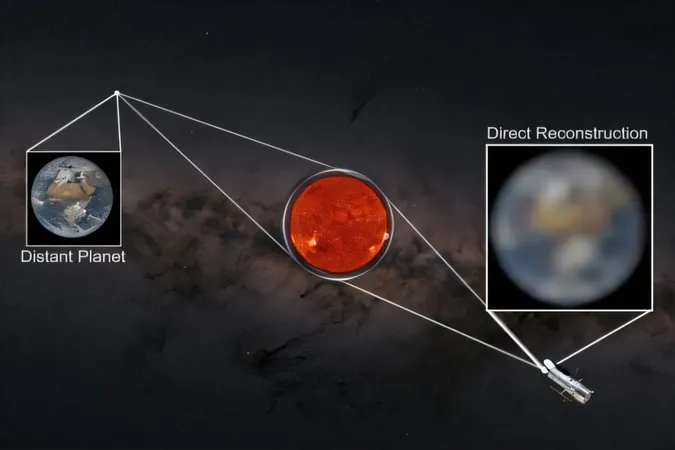
Breakthrough in Space: European Satellites Create First Artificial Solar Eclipses!
2025-06-17
Author: Benjamin
Hold onto your telescopes, space enthusiasts! For the very first time, two European satellites have orchestrated artificial solar eclipses, revolutionizing our ability to study the sun like never before.
Unveiled at the Paris Air Show, the European Space Agency proudly showcased stunning images captured by these innovative satellites, which launched late last year and have been creating simulated eclipses since March. Separated by just 492 feet, one satellite mimics the moon's role by blocking the sun, allowing the other to focus on the sun's elusive corona—the dazzling outer layer that appears as a radiant halo.
But this isn't just a simple dance in the cosmos! This $210 million Proba-3 mission requires mind-boggling precision. The tiny satellites, each under five feet long, must align with an accuracy of just a millimeter—about the thickness of a fingernail! Thanks to advanced technology like GPS, star trackers, and lasers, these cube-shaped crafts navigate autonomously to achieve this extraordinary feat.
So far, the mission has already accomplished 10 successful solar eclipses during its initial phase, with the longest lasting a remarkable five hours. Lead scientist Andrei Zhukov of the Royal Observatory of Belgium expressed his excitement: "We almost couldn’t believe our eyes! This was the first try, and it worked. It was incredible!"
Looking ahead, Zhukov anticipates an average of two eclipses per week, totaling nearly 200 over the course of this two-year mission—equating to over 1,000 hours of totality! This is monumental. Natural solar eclipses occur only once every 18 months and last just a few precious minutes.
The sun continues to perplex astronomers, especially its corona, which boasts higher temperatures than the solar surface. Events like coronal mass ejections can hurl massive amounts of plasma and magnetic fields into space, sometimes resulting in geomagnetic storms that disrupt our technology while painting the night sky with auroras.
Unlike previous missions where the sun-blocking disk and observing telescope were housed on the same satellite, Proba-3 separates these two elements across two different spacecraft, providing unprecedented insights into the corona's structure.
Damien Galano, ESA's mission manager, shared his enthusiasm: "We are extremely satisfied by the quality of these images, and this is really thanks to formation flying with unparalleled accuracy." Stay tuned—this groundbreaking mission is just getting started!









 Brasil (PT)
Brasil (PT)
 Canada (EN)
Canada (EN)
 Chile (ES)
Chile (ES)
 Česko (CS)
Česko (CS)
 대한민국 (KO)
대한민국 (KO)
 España (ES)
España (ES)
 France (FR)
France (FR)
 Hong Kong (EN)
Hong Kong (EN)
 Italia (IT)
Italia (IT)
 日本 (JA)
日本 (JA)
 Magyarország (HU)
Magyarország (HU)
 Norge (NO)
Norge (NO)
 Polska (PL)
Polska (PL)
 Schweiz (DE)
Schweiz (DE)
 Singapore (EN)
Singapore (EN)
 Sverige (SV)
Sverige (SV)
 Suomi (FI)
Suomi (FI)
 Türkiye (TR)
Türkiye (TR)
 الإمارات العربية المتحدة (AR)
الإمارات العربية المتحدة (AR)